Exposure to visible and ultraviolet radiation can be a significant factor in the survival of objects. All wavelengths of radiation provide energy for deterioration reactions that degrade materials; the more powerful the radiation the faster the deterioration.

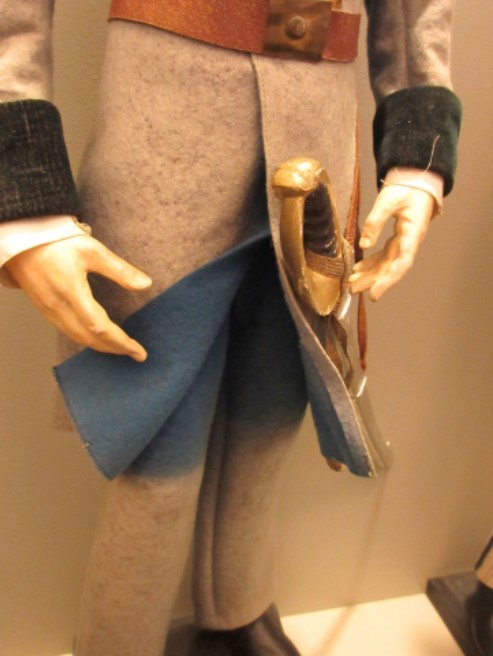
On the left is a silk bedspread that has shattered after long-term exposure to light. On the right, is a detail shot of a Ulysses S. Grant doll. The light damage has turned his Union blues into Confederate gray!
Damage from visible and ultraviolet radiation is cumulative; it is not reversed or repaired by periods of reduced exposure. Objects cannot be “rested.” Textiles are particularly sensitive to light exposure. Light not only fades dyes, but it can permanently degrade the textile fibers.
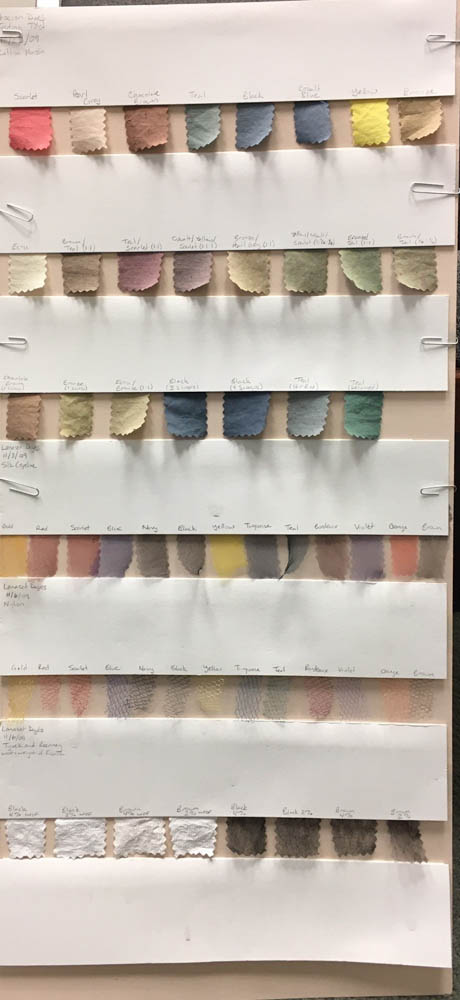
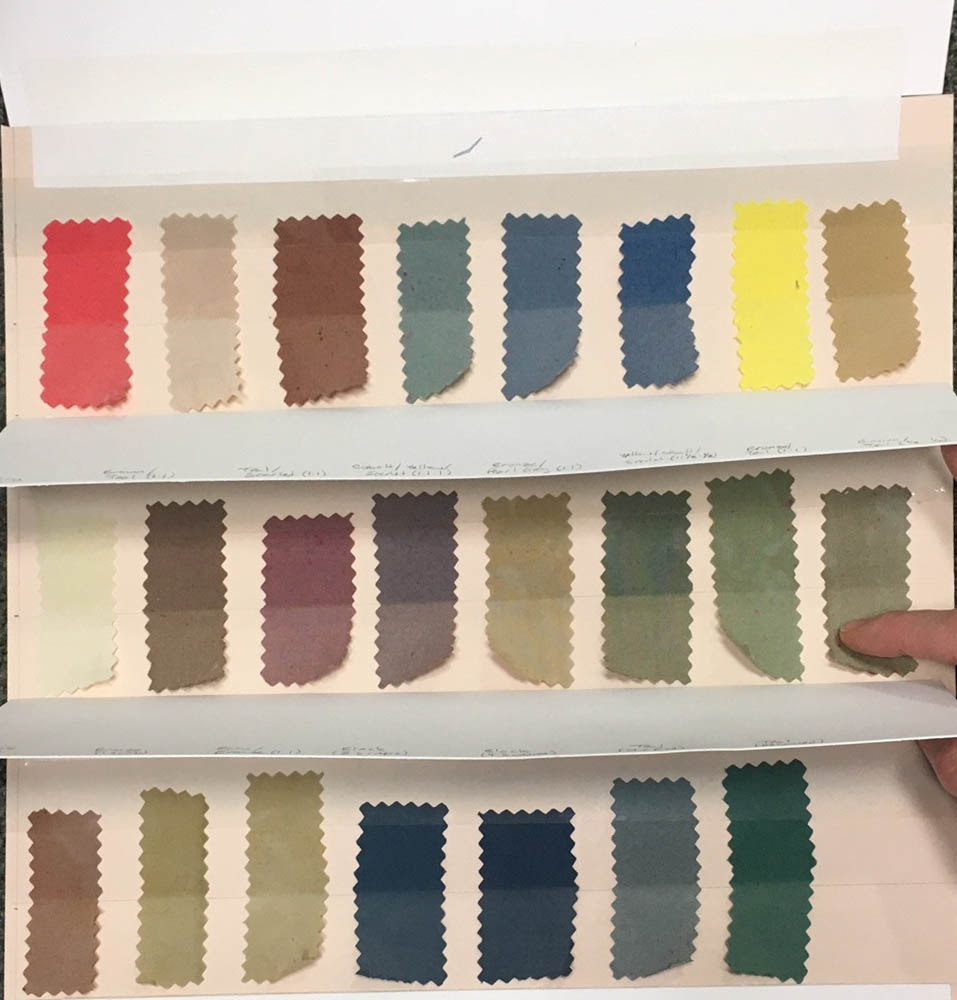
The board on the left hung in the objects lab near at north-facing window for over a decade. On the left, you can see where the light has faded the bottom half of the fabric swatches.
In 2009, the Ford Center staff carried out a long-term test with fabric samples and dyes. Scraps of plain cotton muslin were dyed with Procion dyes. The fabric samples were taped to an acid-free, lignin-free mat board and half of each piece was covered with blotter. The board was hung by a north-facing window and allowed to age naturally. The north-facing window gets less direct sunlight than if it faced any other direction and the board was not directly in front of the window. The windows also have a blinds and a UV filter. Even with those precautions, after ten years, you can see the effect of the light on the dyed cotton.
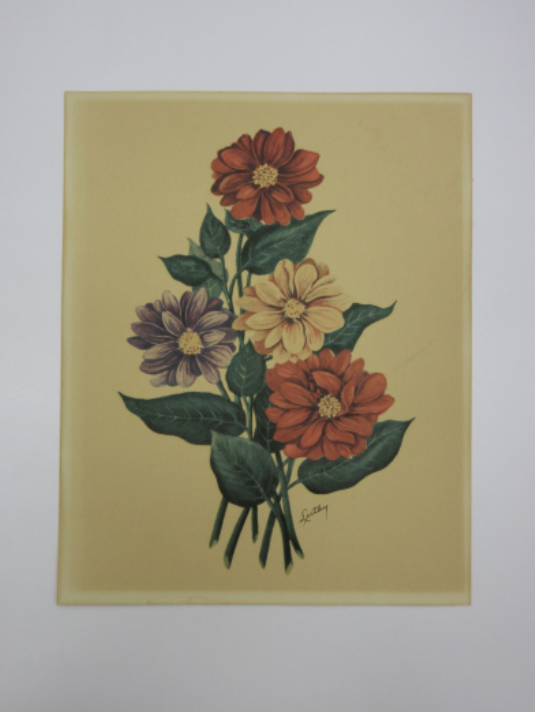
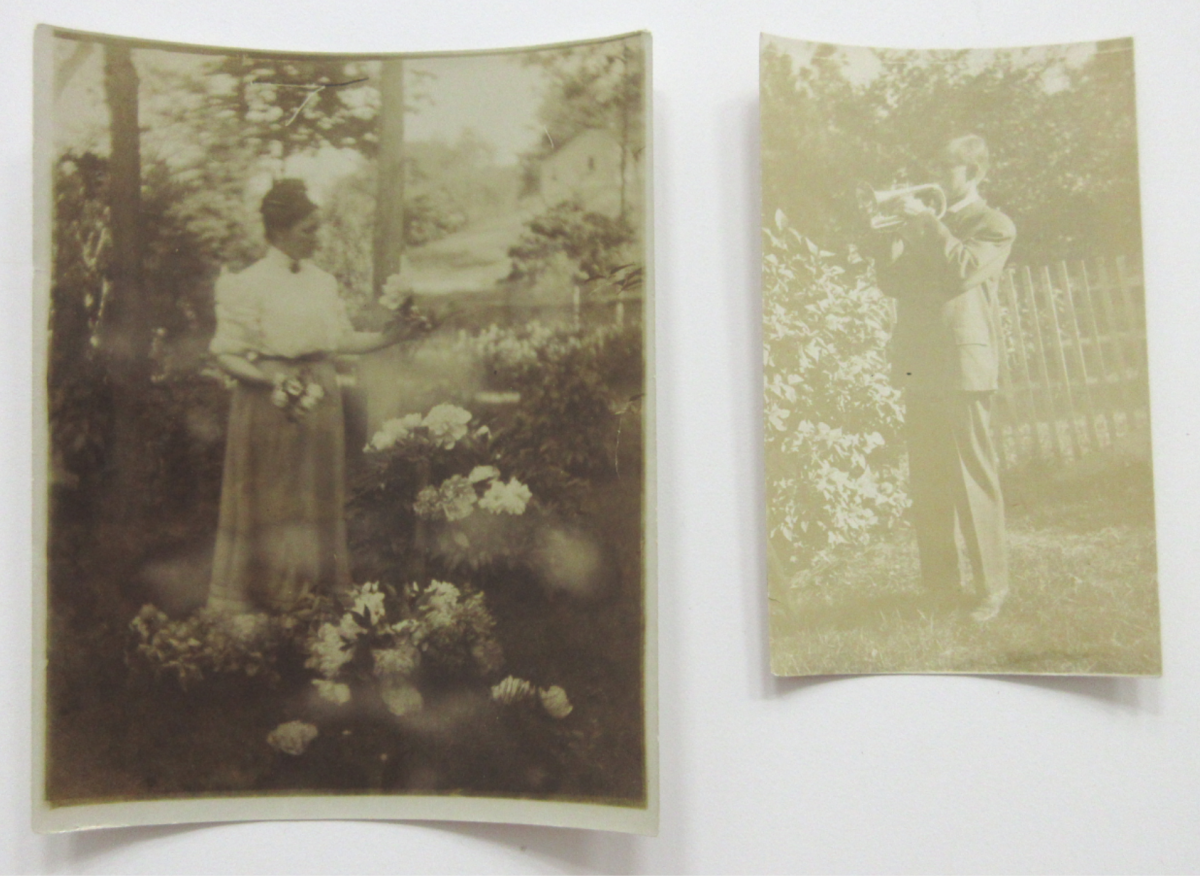
The print on the left has darkened due to photo-oxidation which has affected the paper support. The image on the right shows two photos, one was stored away from light, while the photograph on the right has faded.
Textiles are not the only items sensitive to the effects of light. It is important to protect paper-based items from overexposure to light, which exacerbates deterioration and causes discoloration. Once ink fades, it cannot be restored. Photographs are also susceptible to light damage, which can hasten deterioration of the emulsion layers as well as cause darkening of the support and fading of the image. A faded image cannot be brought back.
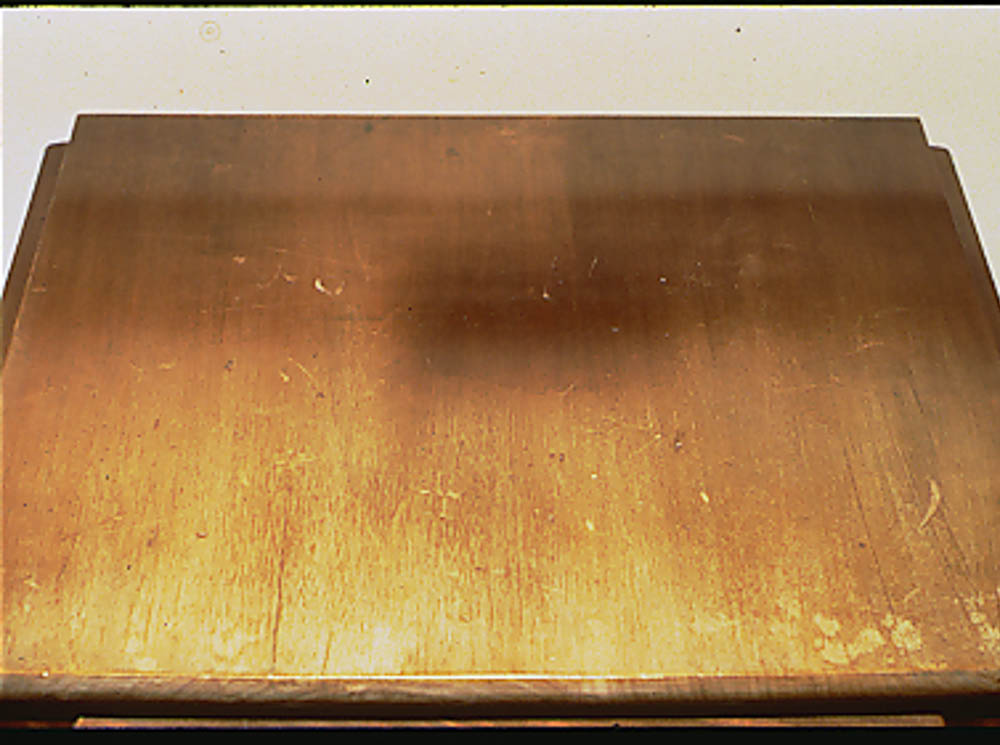
Light damage has bleached this table top to and caused the finish to crack and degrade. The dark areas are where an object, such as a lamp, stood on the table and blocked the light.
Light also plays a large part in the deterioration of furniture. It is known to bleach dark woods, darken light woods, and alter finishes, stains, or paints; the result leaves discolored, brittle, or cracked materials.
It is important to limit the levels (foot-candles or lux), types (visible or ultraviolet) and length of exposure (minutes to days of illumination) to visible and ultraviolet radiation in order to protect collection objects.
Many light sources produce both visible and ultraviolet radiation, as well as heat, and should be filtered for UV emissions, vented for heat dissipation, and used at the lowest visible light levels possible. Particularly when it comes to exhibiting museum objects, all natural light should be blocked or at the minimum filtered for heat, visible radiation, and ultraviolet radiation. Curtains, blinds or shades can be closed, items can be moved out of direct sunlight, while awnings or shutters can be installed over windows.
Ultraviolet radiation is more harmful than visible radiation and is not required for human vision. It should be excluded from the museum environment and the home environment with UV filtering film applied to windows and overhead lights. The ultraviolet light levels recommended for museums should not exceed 75 microwatts per lumen.
Museums and homes should also consider changing out incandescent and fluorescent lighting for LED lighting. LED lights do not emit UV radiation or heat. Although initially expensive, the switch to LED lighting would greatly reduce the amount of electricity required for lighting. There would also be an associated reduction in cooling costs associated with the removal of hot incandescent light bulbs. Finally, the very long lifespan associated with LED lighting will reduce the number of bulb changes needed on a yearly basis.
Limiting exposure to UV light and heat can protect objects from irreversible damage, save money in the long-term and help the environment by reducing energy use.




